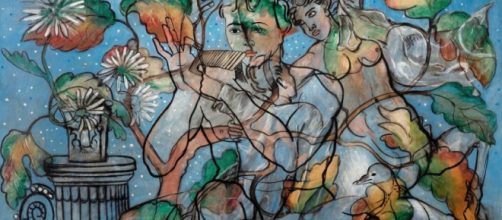“Art must be unaesthetic in the extreme, useless and impossible to justify.” Such was the credo of avant-garde painter Francis Picabia. Art historian Kenneth Coutts-Smith made this known in his 1970 book “Dada.”
Comes the revolution
But that credo was uttered more than a half-century ago. So, I have to wonder why the art world is now so taken with Picabia’s “impossible to justify” art-making that his painting "Pavonia" broke all records last week for a whopping $10.9 million at Sotheby’s Paris auction called “Surrealism and its legacy.”
Has the art world suddenly gone sweet on uselessness?
How else to explain the news that while Sotheby’s focus on the art of the unconscious by Surrealist greats like Rene Magritte, Hans Arp, and Max Ernst, Picabia outsold them all.
And if you want to know how truly useless Picabia’s art is, consider that he once tacked a stuffed monkey to wood and called it “Still Life: Portrait of Cezanne,” and titled an inkblot “Blessed Virgin.”
So, again I have to ask, why are the cognoscenti instantaneously smitten with Picabia? He certainly wasn’t the only rebel in art history – unless you’re willing to dismiss all the Impressionists, Cubists, Minimalists, and Abstractionists.
I suppose one might argue that Picabia was the most outrageous rebel. After all, he took inherited wealth from his railroad-building grandfather to create fake cemeteries on his land to dissuade buyers.
Is his senselessness the attraction?
Certainly, his art is hard to make sense of. I’m thinking of his "M’Amenez-y" (Take Me There), which alludes to castor oil and alligator teeth. Can it be that Picabia’s brand of rebellion is more nihilistic, more anarchistic than others, thus reflecting the bad mood the world is in right now given Putin’s nihilism?
Change of heart?
But wait. The Picabia painting that outsold all others in Paris last week – "Pavonia" – fetching a whopping $10.9 million, is not only short on senselessness, but it’s also downright beautiful. What happened to his credo “Art must be unaesthetic in the extreme”?
What you see in Pavonia are gently overlapping human and architectural forms reportedly inspired by the ancient city of Pompeii.
To demonstrate how utterly practical this work was at the time it was painted (1929), art dealer Leonard Rosenberg commissioned it for his wife‘s bedroom in their Parisian apartment.
So there goes my theory about Picabia’s irrational art suiting Putin’s irrational acts. And here’s the kicker. While Sotheby’s show “Surrealism and Its Legacy” boasts that it was the first in Paris dedicated to Surrealism, Picabia was not a Surrealist.
This was made clear in 2009 in Grove Art Online, a scholarly art encyclopedia that is constantly updated by some 7,000 academics from around the world. Sotheby’s needs to do its homework.
Picabia also experimented with Impressionism, Cubism, as well as Surrealism. But that’s doesn’t mean he was any of those. He was a rebel without a cause.


